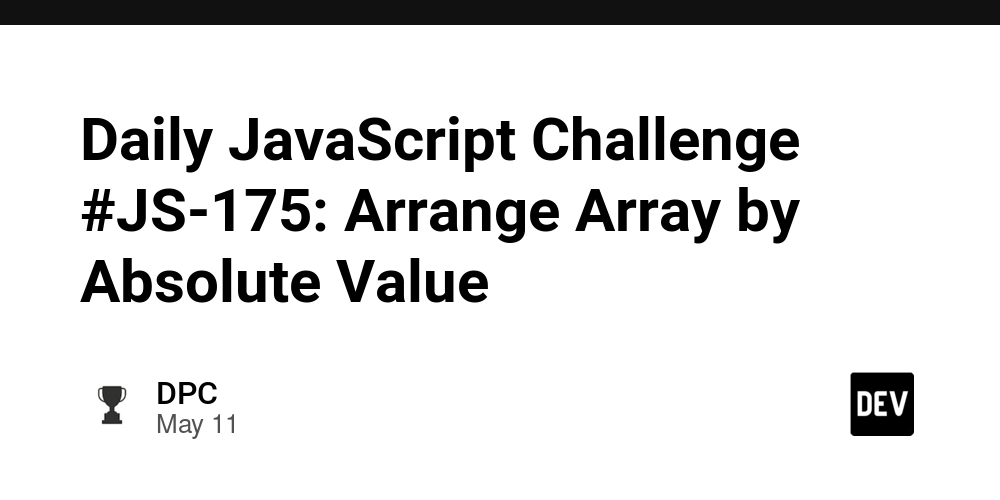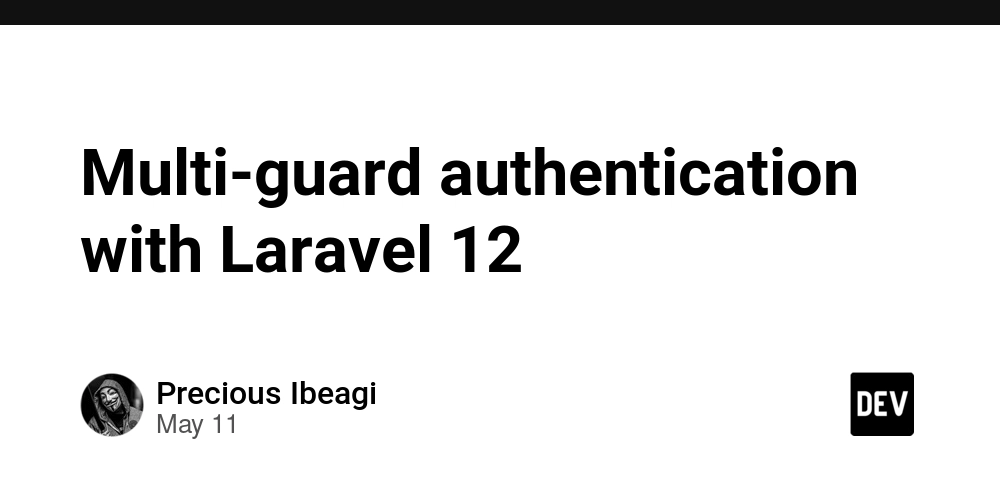What is Spring Security? Understanding Its Open Source Funding, Business Model, and Community Engagement
Abstract: This post delves into the intricacies of Spring Security—one of the leading Java security frameworks. We explore its evolution with an open source funding model, robust corporate support (notably from VMware), transparent licensing under Apache 2.0, and a thriving community. We also discuss practical use cases, inherent challenges, and innovative trends shaping its future. By comparing Spring Security with emerging technological approaches and innovative funding strategies (including blockchain-based models), we offer technical insights and strategic perspectives for developers, enterprises, and open source advocates alike. Introduction Spring Security is a critical component for securing enterprise Java applications. Together with the trusted Spring Framework, it has evolved as a state-of-the-art security solution backed by a dynamic funding model and vibrant community contributions. In today’s digital landscape where cybersecurity is paramount, understanding the open source funding, business model, and licensing strategies of Spring Security not only provides insights on its inner workings but also sets a blueprint for other innovative projects. This article utilizes insights from the original article on Spring Security and incorporates additional context on open source funding, technology trends, and community governance. With technical clarity and easy-to-read explanations, we examine key concepts, practical examples, challenges, and future innovations. Background and Context Spring Security was originally conceived as a lightweight solution for securing Spring-based web applications. Over time, it has evolved into a comprehensive security framework that meets the demands of modern cybersecurity challenges. Its open source nature attracts contributions from individual developers, security experts, and large enterprises alike. This collaborative ecosystem is built on several core pillars: Transparent Funding: A mix of corporate sponsorship (with VMware playing a crucial role) and community donations. Robust Licensing: Adoption of the Apache 2.0 License ensures legal clarity and encourages innovation. Global Community Engagement: An active ecosystem where contributions, discussions, and innovations help improve the framework continuously. In recent years, funding for open source projects has seen diversification with trends toward blockchain-based tokenization and decentralized governance. While Spring Security is firmly established with its tried-and-true model, parallels can be drawn between its stable funding structure and cutting-edge trends seen in projects exploring token-based models and decentralized community governance. Core Concepts and Features Spring Security excels due to the following critical components: 1. Open Source Funding and Business Model Corporate Sponsorship: Large enterprises, particularly VMware, invest in Spring Security by providing financial resources, technical guidance, and strategic direction. This backing ensures regular updates and robust vulnerability management. Key benefit: Long-term financial stability. Community Contributions: Developers around the world actively contribute through code commits, security evaluations, and feature proposals via platforms like GitHub. Key benefit: A diverse collective intelligence that streamlines improvements. Hybrid Funding Model: The combination of corporate sponsorship and grassroots support creates a flexible yet secure funding stream that prioritizes innovation and stability. 2. Licensing for Open Collaboration Apache 2.0 License: Spring Security is licensed under an open and permissive license, reducing legal complexities and fostering contributions from various stakeholders. Companies feel confident integrating it into proprietary solutions due to the well-defined legal framework. Key benefit: Enhanced adoption and ease of integration across systems. 3. Community and Ecosystem Engagement Active GitHub Repository: Development is driven by community inputs, and improvements are continuously integrated through a rigorous code review and testing process. Forums and Discussions: Support and collaborative discussions occur on various technical forums, ensuring that new ideas are validated and security challenges are addressed promptly. Table: Key Components of Spring Security Component Features Benefits Open Source Funding Corporate sponsorship, community donations Financial stability, rapid innovation Licensing Model Apache 2.0 License Legal clarity, ease of integration Corporate Support Strategic backing from VMware and other industry leaders High-quality standards, long-term investments Community Engagement Active GitHub repository, forums, and code reviews Diverse contributions, improved vulnerability fixes Modular Design Easily integrated components and extensibility Customizable security for va

Abstract:
This post delves into the intricacies of Spring Security—one of the leading Java security frameworks. We explore its evolution with an open source funding model, robust corporate support (notably from VMware), transparent licensing under Apache 2.0, and a thriving community. We also discuss practical use cases, inherent challenges, and innovative trends shaping its future. By comparing Spring Security with emerging technological approaches and innovative funding strategies (including blockchain-based models), we offer technical insights and strategic perspectives for developers, enterprises, and open source advocates alike.
Introduction
Spring Security is a critical component for securing enterprise Java applications. Together with the trusted Spring Framework, it has evolved as a state-of-the-art security solution backed by a dynamic funding model and vibrant community contributions. In today’s digital landscape where cybersecurity is paramount, understanding the open source funding, business model, and licensing strategies of Spring Security not only provides insights on its inner workings but also sets a blueprint for other innovative projects.
This article utilizes insights from the original article on Spring Security and incorporates additional context on open source funding, technology trends, and community governance. With technical clarity and easy-to-read explanations, we examine key concepts, practical examples, challenges, and future innovations.
Background and Context
Spring Security was originally conceived as a lightweight solution for securing Spring-based web applications. Over time, it has evolved into a comprehensive security framework that meets the demands of modern cybersecurity challenges. Its open source nature attracts contributions from individual developers, security experts, and large enterprises alike. This collaborative ecosystem is built on several core pillars:
- Transparent Funding: A mix of corporate sponsorship (with VMware playing a crucial role) and community donations.
- Robust Licensing: Adoption of the Apache 2.0 License ensures legal clarity and encourages innovation.
- Global Community Engagement: An active ecosystem where contributions, discussions, and innovations help improve the framework continuously.
In recent years, funding for open source projects has seen diversification with trends toward blockchain-based tokenization and decentralized governance. While Spring Security is firmly established with its tried-and-true model, parallels can be drawn between its stable funding structure and cutting-edge trends seen in projects exploring token-based models and decentralized community governance.
Core Concepts and Features
Spring Security excels due to the following critical components:
1. Open Source Funding and Business Model
Corporate Sponsorship:
Large enterprises, particularly VMware, invest in Spring Security by providing financial resources, technical guidance, and strategic direction. This backing ensures regular updates and robust vulnerability management.
Key benefit: Long-term financial stability.Community Contributions:
Developers around the world actively contribute through code commits, security evaluations, and feature proposals via platforms like GitHub.
Key benefit: A diverse collective intelligence that streamlines improvements.Hybrid Funding Model:
The combination of corporate sponsorship and grassroots support creates a flexible yet secure funding stream that prioritizes innovation and stability.
2. Licensing for Open Collaboration
- Apache 2.0 License: Spring Security is licensed under an open and permissive license, reducing legal complexities and fostering contributions from various stakeholders. Companies feel confident integrating it into proprietary solutions due to the well-defined legal framework. Key benefit: Enhanced adoption and ease of integration across systems.
3. Community and Ecosystem Engagement
Active GitHub Repository:
Development is driven by community inputs, and improvements are continuously integrated through a rigorous code review and testing process.Forums and Discussions:
Support and collaborative discussions occur on various technical forums, ensuring that new ideas are validated and security challenges are addressed promptly.
Table: Key Components of Spring Security
| Component | Features | Benefits |
|---|---|---|
| Open Source Funding | Corporate sponsorship, community donations | Financial stability, rapid innovation |
| Licensing Model | Apache 2.0 License | Legal clarity, ease of integration |
| Corporate Support | Strategic backing from VMware and other industry leaders | High-quality standards, long-term investments |
| Community Engagement | Active GitHub repository, forums, and code reviews | Diverse contributions, improved vulnerability fixes |
| Modular Design | Easily integrated components and extensibility | Customizable security for various enterprise needs |
Applications and Use Cases
Spring Security has a wide range of applications across different sectors. Here are a few practical examples:
Enterprise Java Applications:
Most modern enterprise applications built on the Spring Framework leverage Spring Security to maintain robust authentication, authorization, and protection against common vulnerabilities (e.g., CSRF attacks).Cloud-Based Solutions:
With increasing reliance on cloud services, companies incorporate Spring Security to secure distributed microservices and API environments. VMware’s involvement ensures that the framework is kept up-to-date with industry standards.FinTech and Financial Services:
In secure financial applications where data integrity and confidentiality are critical, Spring Security’s modular and transparent design offers a solid foundation for building resilient systems.
Challenges and Limitations
Despite its many advantages, like any technology, Spring Security faces several challenges:
Evolving Threat Landscape:
As cybersecurity threats become more sophisticated, maintaining state-of-the-art security measures requires constant updates, rigorous testing, and agile development practices.Adoption Shifts:
Although well-established, the community must continually adapt to incorporate new security paradigms such as blockchain-based identity management and tokenized funding—all while preserving the simplicity and transparency provided by the Apache 2.0 License.Funding Uncertainty:
The dual funding model (corporate sponsorship combined with community donations) can sometimes face challenges when market conditions shift, potentially affecting resource allocation for large-scale updates.Integration Complexities:
Some enterprises struggle to integrate open source frameworks with legacy systems. While the Apache 2.0 License mitigates many legal hurdles, technical integration still requires careful planning and expertise.
Bullet List of Common Challenges:
- Cybersecurity Threats: Rapidly evolving vulnerabilities.
- Funding Variability: Shifts in corporate or community funding.
- Integration Issues: Configuring legacy systems with modern frameworks.
- Scalability Pressures: Maintaining performance while scaling security measures.
Future Outlook and Innovations
Looking ahead, several trends indicate exciting advancements for Spring Security and open source funding models in general:
1. Increased Adoption of Decentralized Funding Models
Emerging models including token-based rewards and decentralized governance are influencing how open source projects manage funding. Although Spring Security is currently supported by traditional models, there is interest in exploring decentralized funding as a supplementary mechanism. Projects such as license-token-bridging-the-gap-in-oss-funding and license-token-empowering-open-source-creators shine a light on potential future directions.
2. Enhanced Integration with Blockchain Technologies
The convergence of blockchain and open source security frameworks promises new methods for ensuring data integrity and transparency. Although Spring Security is not directly blockchain-based, its principles of open collaboration and distributed governance find parallels in evolving blockchain projects—such as those discussed in posts like the convergence of blockchain, security, NFTs, and open source funding.
3. Next-Generation Continuous Integration and Automated Testing
As threat landscapes evolve, continuous integration (CI) and automated vulnerability scanning will become even more critical. Integrated CI solutions and automated testing frameworks (as seen in community projects on GitHub) ensure that security patches and new features are rapidly deployed without compromising system integrity.
4. Rising Importance of Community-Led Governance
Community governance remains a cornerstone of successful open source projects. With increasing contributions from global developers, the model exemplified by Spring Security serves as a benchmark. Future governance may incorporate more advanced consensus mechanisms and perhaps even blockchain-driven accountability systems to further democratize decision-making.
Summary and Conclusion
Spring Security stands as a seminal example of an open source project that thrives at the intersection of robust corporate sponsorship, innovative community contributions, and transparent legal frameworks. This powerful framework is supported by its dual funding model and the forgiving, enterprise-friendly Apache 2.0 License.
In summary:
- Open Source Funding: Spring Security benefits from a unique blend of corporate support (notably from VMware) and enthusiastic community contributions. This model ensures continuous development, rapid vulnerability mitigation, and scalability across industries.
- Transparent Licensing: The adoption of the Apache 2.0 License fortifies its legal and operational framework, enabling widespread use and integration within diverse systems.
- Community and Ecosystem: Active development on platforms like GitHub ensures that the framework evolves with industry needs, incorporating new security paradigms and adapting to emerging technological trends.
- Future Innovations: As decentralized funding models, blockchain integration, and automated testing become more prevalent, the open source model exemplified by Spring Security is well-positioned to adapt and lead future security innovations.
The journey of Spring Security—from its humble beginnings as a security module for Java applications to its current status as a cornerstone technology for enterprise security—is a testament to the power of collaboration and strategic funding in open source development. As organizations increasingly demand scalable, secure, and transparent software solutions, understanding the underpinnings of its business model and community philosophy offers valuable lessons for both developers and enterprise decision-makers.
Additional Resources and Readings
For further insights into related topics, consider exploring:
- Spring Security Official Website for detailed documentation.
- Original Spring Security Article for more foundational insights.
- Industry perspectives on licensing and innovation in open source funding are further discussed in posts like License Token: A New Era for Open Source Licensing and Open Source Developer Fundraising: Importance and Methods – A Deep Dive.
Also, check these related articles that explore innovative open source licensing strategies:
- Arbitrum and Open Source License Compatibility
- Arbitrum and Open Source Scaling Solutions
- License Token: Bridging the Gap in OSS Funding
- License Token: Empowering Open Source Creators
Final Thoughts
Spring Security’s evolution demonstrates how secure and sustainable software can be developed through prudent funding, strategic sponsorship, and robust community engagement. Its open source model, underscored by the Apache 2.0 License, not only fosters innovation but also builds trust among enterprises and developers worldwide. As future innovations in decentralized funding, blockchain integration, and automated testing emerge, Spring Security is poised to remain at the forefront of enterprise security.
Whether you are a developer seeking to secure your applications, an enterprise architect evaluating robust security frameworks, or a technology strategist exploring innovative funding models, the insights gleaned from Spring Security’s journey will continue to inspire and inform the next generation of digital security solutions.
Embrace the framework, understand its business model, and leverage its community-driven innovations to build secure, scalable, and cutting-edge applications in an ever-evolving technological landscape.










































































































































































![[The AI Show Episode 146]: Rise of “AI-First” Companies, AI Job Disruption, GPT-4o Update Gets Rolled Back, How Big Consulting Firms Use AI, and Meta AI App](https://www.marketingaiinstitute.com/hubfs/ep%20146%20cover.png)




























































































































![[FREE EBOOKS] Offensive Security Using Python, Learn Computer Forensics — 2nd edition & Four More Best Selling Titles](https://www.javacodegeeks.com/wp-content/uploads/2012/12/jcg-logo.jpg)



![Ditching a Microsoft Job to Enter Startup Purgatory with Lonewolf Engineer Sam Crombie [Podcast #171]](https://cdn.hashnode.com/res/hashnode/image/upload/v1746753508177/0cd57f66-fdb0-4972-b285-1443a7db39fc.png?#)
































































































































































































































-xl.jpg)













![As Galaxy Watch prepares a major change, which smartwatch design to you prefer? [Poll]](https://i0.wp.com/9to5google.com/wp-content/uploads/sites/4/2024/07/Galaxy-Watch-Ultra-and-Apple-Watch-Ultra-1.jpg?resize=1200%2C628&quality=82&strip=all&ssl=1)













![Apple M4 iMac Drops to New All-Time Low Price of $1059 [Deal]](https://www.iclarified.com/images/news/97281/97281/97281-640.jpg)
![Beats Studio Buds + On Sale for $99.95 [Lowest Price Ever]](https://www.iclarified.com/images/news/96983/96983/96983-640.jpg)

![New iPad 11 (A16) On Sale for Just $277.78! [Lowest Price Ever]](https://www.iclarified.com/images/news/97273/97273/97273-640.jpg)






































![Apple's 11th Gen iPad Drops to New Low Price of $277.78 on Amazon [Updated]](https://images.macrumors.com/t/yQCVe42SNCzUyF04yj1XYLHG5FM=/2500x/article-new/2025/03/11th-gen-ipad-orange.jpeg)



![[Exclusive] Infinix GT DynaVue: a Prototype that could change everything!](https://www.gizchina.com/wp-content/uploads/images/2025/05/Screen-Shot-2025-05-10-at-16.07.40-PM-copy.png)























































